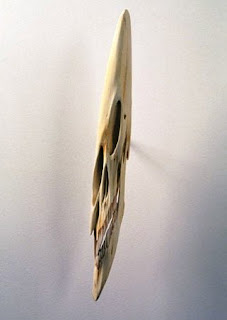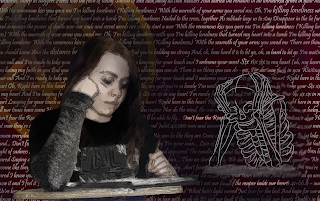

My partner and I chose the artists Hans Holbein and Robert Lazzarini for our "exhibit". Holbein is a 16th century oil painter, most famous for his painting "The Ambassadors". Lazzarini is a modern artist who uses technology to create his sculptures. Holbein's "The Ambassadors" and Lazzarini's skull sculpture were the two pieces that brought our attention to the commonalities between these artists. In Holbein's painting, there is a skewed skull placed at the feet of two men. One must approach the painting from a certain angle in order for this skull to appear in correct perspective. Lazzarini used modern technology to create a 3-Dimensional skull that appears to be falling from a 3-D form to a 2-D form. When looking at Lazzarini's and Holbein's works next to eachother, there is an undeniable similarity. In fact, they are almost identical, the only difference being the method in which each was made: one done in a very traditional style of oil painting, and one done using modern technologies. However, they both seem to convey the same message of momento mori , a Latin phrase meaning "reminder of death". Therefore, the works of these artists prove that some themes can carry through many centuries.



